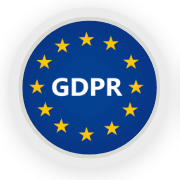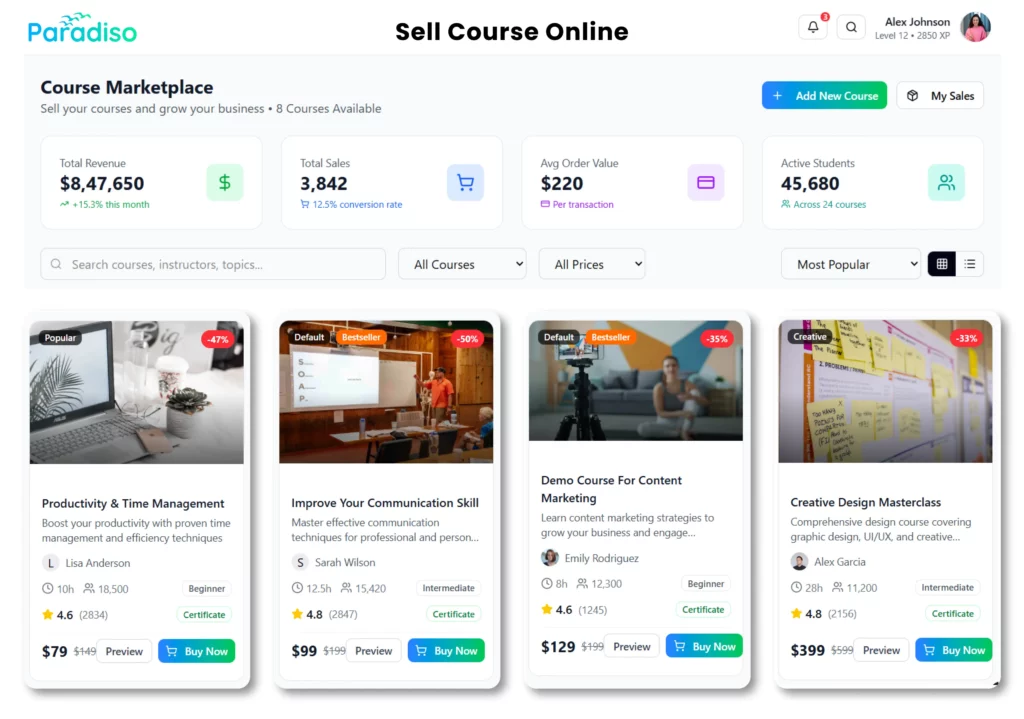Choosing the right platform for creating and selling online courses can be overwhelming, but digital marketing tips can help you effectively reach and sell to your target audience. Course creation and selling is a form of e-commerce that involves selling digital products such as eBooks, demo videos, and videos online.
However, it is essential to consider how digital marketing can impact your course’s price, quality, and value. In this article, we will discuss the process of creating and selling online courses and the potential challenges to be aware of. By understanding the ins and outs of this process, you can make informed decisions and maximize the success of your online education business.
5 Digital Marketing Tips to Sell Courses Online
Digital marketing for course selling involves promoting and selling courses or training products to potential customers through various online channels. This may include creating and distributing free eCourses, promoting courses on social media, or using email marketing to reach targeted audiences. The goal is to provide value to potential students and make them aware of the course or training product, hoping they will purchase it. Many different tactics can be employed as a digital marketing strategy for course creation and selling. Still, the ultimate goal is to drive sales and reach as many potential students as possible.
1. How To Quote Pricing of Your Courses?
It’s important to consider a few factors when determining the price of your course or services. Here are a few things to consider:
- The value of your course or service: What will your course or service provider offer your customers? Will it help them solve a problem, learn a new skill, or achieve a goal? The more value your course or service provides, the more you can charge for it.
- The cost of creating and delivering your course or service: How much time and resources will developing and delivering your course or service take? You’ll need to factor in the cost of materials, any software or tools you use, and your time and labour.
- The competition: What are similar courses or services in your market charging? You want to price yourself fairly and leave money on the table, but you also want to ensure you are in the market. Look at what your competitors are charging and use that as a benchmark, but feel free to differentiate yourself by offering more value or a unique selling proposition.
- Your target audience: Who are you targeting with your course or service? Are they willing to pay a premium for high-quality content or price-sensitive content? Consider your target audience’s income level and needs when determining your price.
2. Know Your Audience well.
Knowing your audience is crucial for creating and marketing courses. It would help if you understood their interests and behaviour to create targeted marketing campaigns that appeal to them.
3. Marketing Platforms You need
When creating courses, you must decide on the tools and platforms you’ll use. Many online course-selling platforms, such as Paradiso LMS, allow you to create and sell digital products. Your platform choice may depend on your course’s level of activity. Marketing channels like email, social media, and phone calls can be used to reach and capture potential customers. In addition, the amount of expected course traffic can influence your decision to use a shared computer or a dedicated server, which can assist with course organization and management.
4. Tracking your campaign’s effectiveness
Monitoring the success of your marketing campaign is crucial for understanding its impact and identifying areas for improvement. To track your campaign’s effectiveness, it’s important to measure key metrics such as the number of people who have purchased your courses and the percentage of those customers who purchased as a result of your marketing efforts. By tracking these metrics, you can determine the effectiveness of your campaign and make any necessary adjustments.
5. Measuring Goals
One way to ensure the success of your digital marketing efforts for course creation and selling is to set clear, measurable goals for your audience and regularly track your progress toward those goals. This can help you identify areas of weakness in your marketing strategy and make necessary improvements. For example, if you release a course on Paradiso CourseCart and want to assess its performance, you can track metrics such as the number of sign-ups and the percentage of those sign-ups that result in a purchase. By regularly monitoring these metrics, you can gauge the effectiveness of your marketing efforts and make any necessary adjustments.
Final Thoughts
Selling courses online requires a strategic approach to digital marketing. Course creators can enhance their online presence by implementing five essential tips and boosting course sales. Firstly, understanding the target audience is crucial. Conducting market research helps tailor marketing messages to meet the audience’s needs. Secondly, optimizing the course website for search engines improves visibility and drives organic traffic. Keyword research and high-quality content play a vital role in achieving this.
Course creators should focus on understanding their audience, optimizing their website for search engines, leveraging social media, utilizing email marketing, and monitoring performance. These tips will enhance their online presence, attract learners, and increase course sales.
























